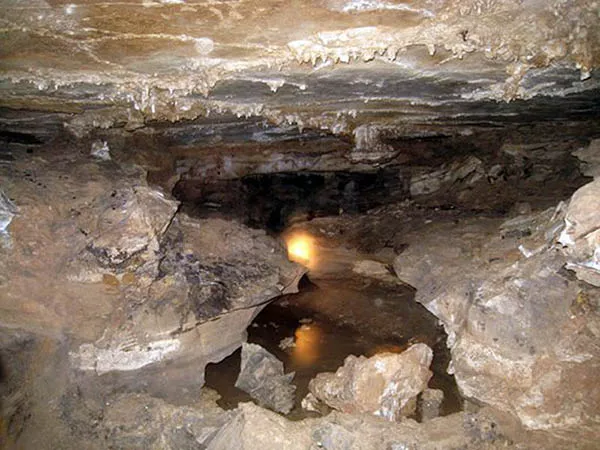

The presence of charcoal, as well as diagnostic polyaromatic hydrocarbons, point to wildfires and thus dry episodes on the land surface. Both plants and animals preserve original organic constituents. The enclosed biota contains rare upland plants, such as conifers, as well as scorpions. The fill within the caves suggests multiple flood events on the surface. These features also provide evidence of changing water tables. These palaeocaves have dissolutional features associated with contemporaneous sediment influx (paragenesis), indicating that speleogenesis and cave sediment deposition were synchronous. Pennsylvanian palaeokarst from Illinois, USA, illustrate the potential of ancient caves as a home for 'lost stratigraphy'. Caves and karst also allow for the preservation of biota not usually found in the fossil record. The sedimentary record within caves can act as a repository for stratigraphic and palaeoenvironmental information that has been locally removed by subsequent surface erosion. Karstification produces a unique and spatially complex architecture of accommodation space for the accumulation of later sediments. We conclude that the apparent values of n in the USGS rating tables are systematically too low for small streams.

Because Method 4 is predictive, it provides a useful alternative to methods 1–3 that are based on USGS field measurements, which are heavily weighted toward low discharges. Of these methods, only methods 2 and 3 compare favorably, and these values compare poorly with Method 1 based on field data, and with method 4 based on theoretical and empirical relationships. hLusing USGS rating tables at each site (3) a mathematical inverse method applied to the same USGS rating tables (4) use of LiDAR data on channel geometry to determine the power dependences of channel area A and hydraulic radius H on h*, combined with the Manning and rational equations to predict n. local stage (hL) using USGS field measurements at each site (2) optimizing linearity in a plot of Q1/nvs.

Four different methodologies are employed to determine both n and ho: (1) optimizing linearity in a plot of Q1/nvs. Louis, Missouri area, all of which have catchments of 0.6 to 220 km2. Louis County.Įxtensive USGS data tables and detailed, 1 m2 LiDAR surveys are used to determine the optimal power n that relates discharge (Q) to stage (h*) above channel bottom (ho) at 39 gauging stations on small streams in the St. A far larger number (>10%) of caves have been highly modified or obliterated by suburban expansion in St. The entrances to at least two caves in the county have undergone significant natural modification in the last 30 years due to breakdown or landslide processes, a large number considering the small population. Most of these caves are damp or dry, and some occur along high ridges. Louis County are mostly hosted in Ordovician rocks and have diverse character. Most are “epiphreatic,” as they have flowing streams that provide subsurface drainage for overlying sinkhole plains that can have > 100 sinks per square mile. Caves along and near the Mississippi and Missouri river bluffs are mostly developed in the Mississippian St. Cave entrances are concentrated in areas of high relief, particularly along the bluffs of the large rivers, and also near the Burlington Escarpment. Cave lengths are exponentially distributed such that half of the caves are less than 100 feet long, while fully half of the aggregate length is contained in only two caves, Cliff Cave and Cave of the Falls. The cave database for the county lists 127 caves with an aggregate length exceeding 4 miles. Louis County is part of a great karst region that underlies most of the Ozark plateaus province and its border.


 0 kommentar(er)
0 kommentar(er)
